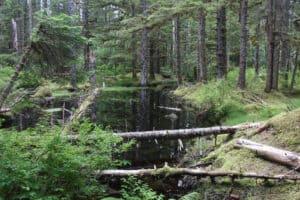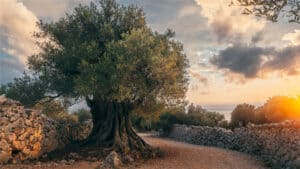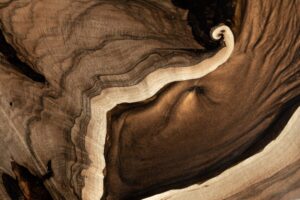What exactly is Bonsai Nebari and why might it be something you should cultivate? If you are a beginning Bonsai tree artist, you may not have heard of Nebari before. Also known as root flare or surface roots, Nebari helps your Bonsai tree achieve a more natural and balanced appearance. But what exactly goes into the development of beautiful surface roots?
In this article, we will address everything you need to know about Nebari, including what it is and why it’s important. We’ll also give you certain types of Bonsai trees that tend to develop stylistic and gorgeous surface roots, as well as advice on how to cultivate Nebari in your own specimen. Let’s start digging!
What is Nebari?
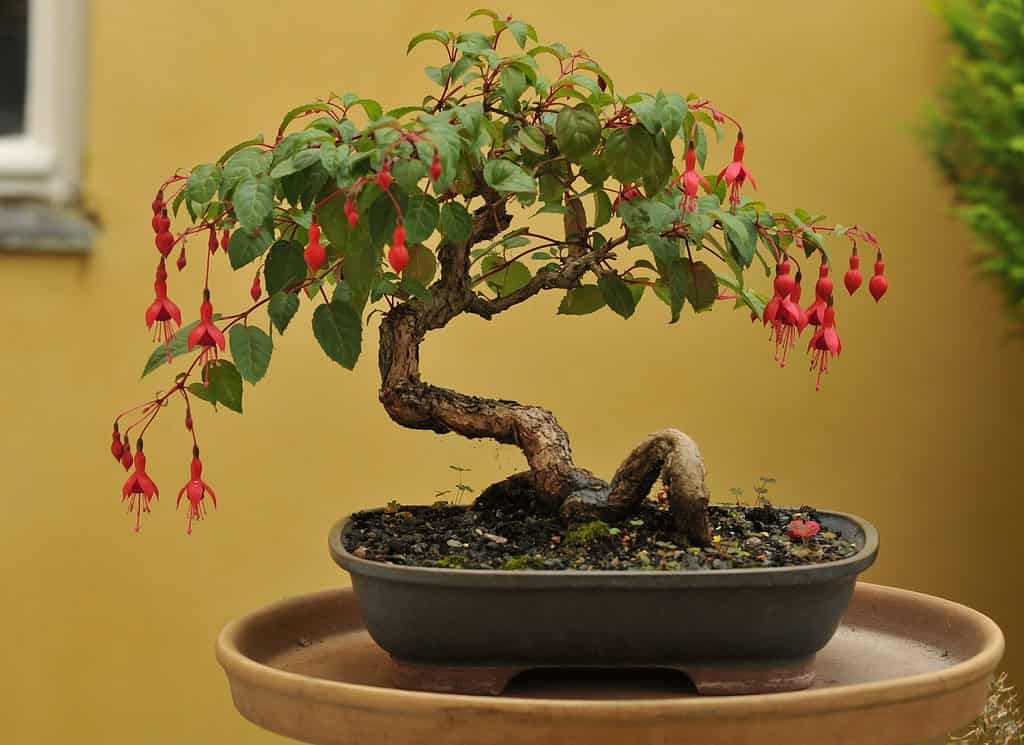
Also known as root flare or surface roots, Nebari helps your Bonsai tree achieve a more natural and balanced appearance.
©pytralona/Shutterstock.com
A well-balanced and beautiful Bonsai tree goes hand in hand with Nebari development. Trees in nature often develop surface-level roots for their own health and stability, and the same can and should be said of Bonsai trees. Some tree species naturally develop Nebari, given their shallow root systems. The way that a Bonsai tree flares out its surface-level roots has a lot of influence on its overall design.
While the Nebari of your tree can be developed and shaped, choosing a Bonsai tree specimen with initial Nebari development is a good place to begin.
Why is Nebari Important?
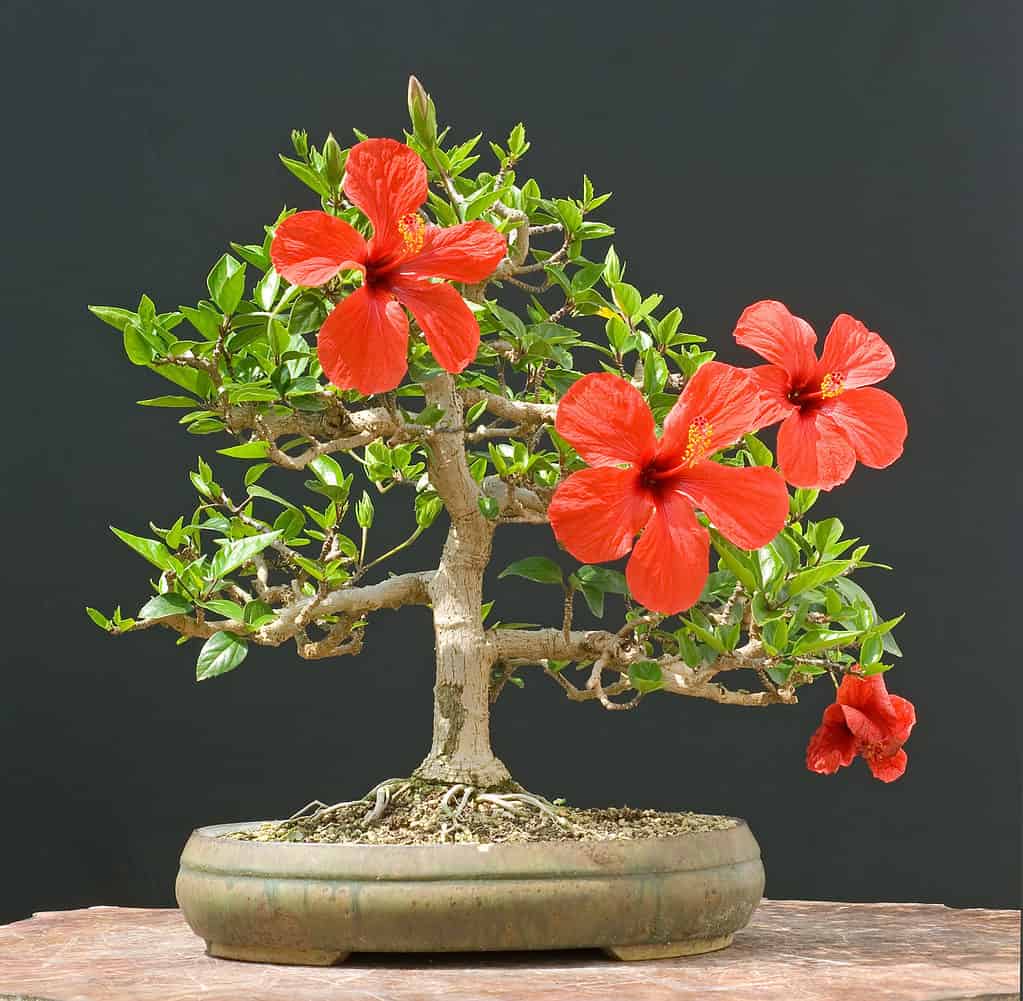
Some Bonsai tree artists don’t bother with elaborate surface roots, while others choose to develop their surface roots as an artistic statement.
©Walter Pall/Shutterstock.com
For the most part, Nebari is integral to forming an even and balanced Bonsai tree style or design. Echoing the spreading branches and canopy of your tree, Nebari creates a visual harmony with the top of your specimen. Plus, surface roots are common in full-grown trees, helping you achieve your miniature landscape with ease. Surface roots can also be a sign of a healthy, stable, and happy tree!
There are many different schools of thought and trends when it comes to Nebari. Some Bonsai tree artists don’t bother with elaborate surface roots, while others choose to develop their surface roots as an artistic statement. The evenness and uniformity of your tree’s Nebari are signs that you have carefully cultivated your Bonsai tree, particularly as it ages and develops.
Types of Bonsai Trees that Develop Beautiful Nebari
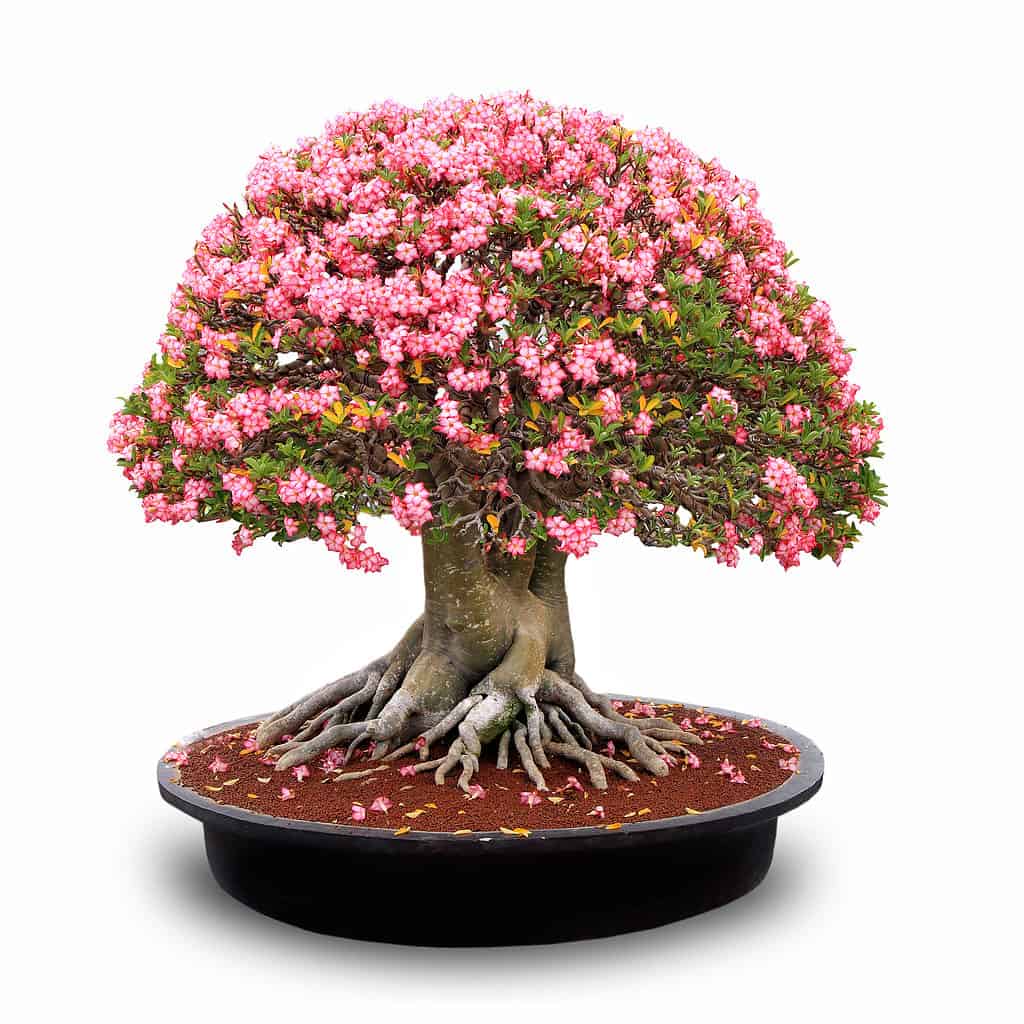
Tree species that have deep root systems are going to need more help developing good Nebari, but it isn’t impossible.
©goldenjack/Shutterstock.com
For the most part, all Bonsai trees can develop good Nebari. However, some species are more inclined to develop Nebari over others. For example, tree species that have deep root systems are going to need more help developing good Nebari, but it isn’t impossible. Some Bonsai trees that may develop Nebari naturally include:
- Maple
- Oak
- Elm
- Pine
- Willow
- Ficus
- Birch
- Beech
- Serissa
- Azalea
- Desert rose
- Plum
- Olive
How to Cultivate Nebari or Surface Roots
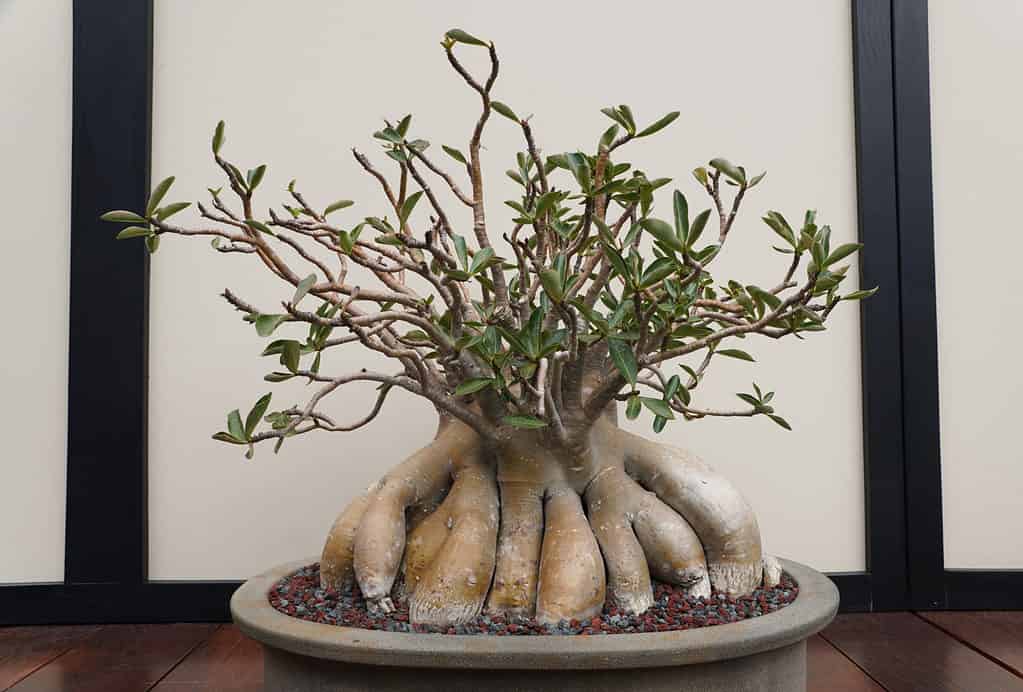
If you are shopping for a Bonsai tree for the first time and you know you want to develop good Nebari, you should choose your tree carefully.
©Khairil Azhar Junos/Shutterstock.com
If you know you want to highlight Nebari in your overall Bonsai tree design, there are a few different things you can do to help accomplish this. Here’s how to cultivate the surface roots of your Bonsai tree over time.
Choose Your Tree Carefully
Not only does the species of tree have something to do with your surface root potential, but the individual specimens matter too. If you are shopping for a Bonsai tree for the first time and you know you want to develop good Nebari, you should choose your tree carefully. Check for signs of existing surface roots as well as the evenness of said roots. It can be extremely difficult to achieve an even spread of surface roots if your existing specimen is lopsided or growing unevenly to begin with!
Prune Roots When Repotting
The best way to encourage even Nebari growth is by pruning the roots of your Bonsai tree when it’s time to repot it. This can be a nerve-wracking task, particularly for beginners, but pruning certain roots of your tree will promote surface root growth rather than subterranean root growth. When repotting, carefully trim the long and dangling vertical roots of your tree. You should also spread out your existing horizontal roots to encourage more developed surface root growth!
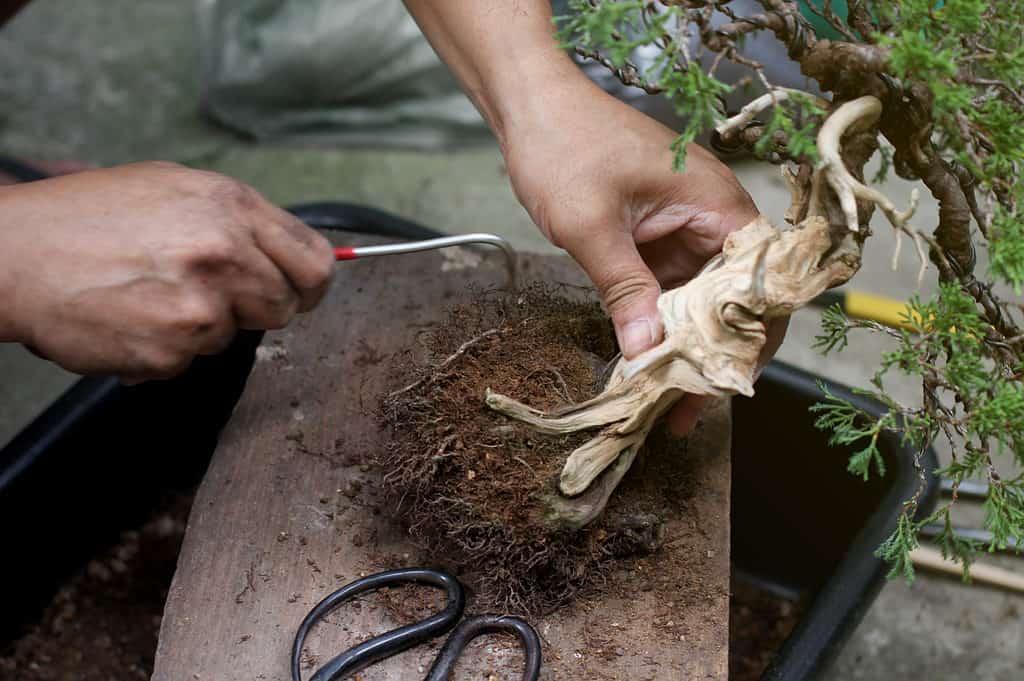
One of the primary reasons that so many Bonsai tree artisans choose to develop Nebari is because it’s a sign of an aged tree.
©qSPOoKYp/Shutterstock.com
Cinch or Wound the Trunk of Your Tree
Another potential method to try when it comes to developing good Nebari is cinching or wounding. You can carefully choose to harm the trunk of your Bonsai tree in order to redirect its energies and develop surface roots. Bind your Bonsai tree with wire, right at the base of the trunk where you want to see Nebari.
Alternatively, you can carefully remove strips of bark or poke holes into your Bonsai tree’s trunk so that it develops roots. Choose the root locations evenly and cautiously, and make sure you apply a rooting hormone on the cuts! Keep these parts of the tree moist to encourage growth and watch out for signs of mildew or pests.
Good Nebari Takes Time!
One of the primary reasons that so many Bonsai tree artisans choose to develop Nebari is because it’s a sign of an aged tree. Surface roots don’t develop overnight, especially ones that are evenly spread and of a precise thickness. In fact, good Nebari often takes multiple years to develop. However, it’s worth the wait, especially when you consider the fact that your Bonsai tree often needs decades to reach its true potential!
Up Next:
- The Best Soil for Bonsai Trees
- How to Properly Place a Bonsai Tree
- Bonsai Styles: Everything You Need to Know
The photo featured at the top of this post is © Bernd Schmidt/Shutterstock.com
Sources
- ACTA Horticulture, Available here: https://www.actahort.org/books/642/642_23.htm
Thank you for reading! Have some feedback for us? Contact the AZ Animals editorial team.



